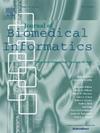医学报告生成的视觉语言诊断语义增强。
IF 4
2区 医学
Q2 COMPUTER SCIENCE, INTERDISCIPLINARY APPLICATIONS
引用次数: 0
摘要
生成方法目前在医学报告生成中很流行,因为它们可以从输入的图像中自动生成专业报告,帮助医生做出更快、更准确的决策。然而,目前的方法面临着重大挑战:1)医学图像中的病变区域通常很难被模型准确捕获,2)即使捕获了这些区域,也经常不能使用精确的临床诊断术语来描述。为了解决这些问题,我们提出了一个视觉语言诊断语义增强模型(VLDSE)来生成高质量的报告。我们的方法在图像和报告语义一致性(IRSC)模块中使用监督对比学习来弥合视觉和语言特征之间的语义差距。此外,我们还设计了视觉语义定性和量化(VSQQ)模块和事后语义校正(PSC)模块来增强视觉语义和词间关系。实验表明,我们的模型在公开可用的IU X-RAY和MIMIC-MV数据集上取得了很好的性能。具体来说,在IU X-RAY数据集上,我们的模型达到了18.6%的BLEU-4得分,比基线提高了12.7%。在MIMIC-MV数据集上,我们的模型比基线提高了10.7%的blue -1分数。这些结果证明了我们的模型能够产生准确和流畅的病变区域描述。本文章由计算机程序翻译,如有差异,请以英文原文为准。

Visual-linguistic Diagnostic Semantic Enhancement for medical report generation
Generative methods are currently popular for medical report generation, as they automatically generate professional reports from input images, assisting physicians in making faster and more accurate decisions. However, current methods face significant challenges: 1) Lesion areas in medical images are often difficult for models to capture accurately, and 2) even when captured, these areas are frequently not described using precise clinical diagnostic terms. To address these problems, we propose a Visual-Linguistic Diagnostic Semantic Enhancement model (VLDSE) to generate high-quality reports. Our approach employs supervised contrastive learning in the Image and Report Semantic Consistency (IRSC) module to bridge the semantic gap between visual and linguistic features. Additionally, we design the Visual Semantic Qualification and Quantification (VSQQ) module and the Post-hoc Semantic Correction (PSC) module to enhance visual semantics and inter-word relationships, respectively. Experiments demonstrate that our model achieves promising performance on the publicly available IU X-RAY and MIMIC-MV datasets. Specifically, on the IU X-RAY dataset, our model achieves a BLEU-4 score of 18.6%, improving the baseline by 12.7%. On the MIMIC-MV dataset, our model improves the BLEU-1 score by 10.7% over the baseline. These results demonstrate the ability of our model to generate accurate and fluent descriptions of lesion areas.
求助全文
通过发布文献求助,成功后即可免费获取论文全文。
去求助
来源期刊

Journal of Biomedical Informatics
医学-计算机:跨学科应用
CiteScore
8.90
自引率
6.70%
发文量
243
审稿时长
32 days
期刊介绍:
The Journal of Biomedical Informatics reflects a commitment to high-quality original research papers, reviews, and commentaries in the area of biomedical informatics methodology. Although we publish articles motivated by applications in the biomedical sciences (for example, clinical medicine, health care, population health, and translational bioinformatics), the journal emphasizes reports of new methodologies and techniques that have general applicability and that form the basis for the evolving science of biomedical informatics. Articles on medical devices; evaluations of implemented systems (including clinical trials of information technologies); or papers that provide insight into a biological process, a specific disease, or treatment options would generally be more suitable for publication in other venues. Papers on applications of signal processing and image analysis are often more suitable for biomedical engineering journals or other informatics journals, although we do publish papers that emphasize the information management and knowledge representation/modeling issues that arise in the storage and use of biological signals and images. System descriptions are welcome if they illustrate and substantiate the underlying methodology that is the principal focus of the report and an effort is made to address the generalizability and/or range of application of that methodology. Note also that, given the international nature of JBI, papers that deal with specific languages other than English, or with country-specific health systems or approaches, are acceptable for JBI only if they offer generalizable lessons that are relevant to the broad JBI readership, regardless of their country, language, culture, or health system.
 求助内容:
求助内容: 应助结果提醒方式:
应助结果提醒方式:


